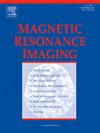An analysis of brain structural changes in type 2 diabetes using advanced MRI techniques
IF 2
4区 医学
Q2 RADIOLOGY, NUCLEAR MEDICINE & MEDICAL IMAGING
引用次数: 0
Abstract
Background
T2DM is associated with neurodegenerative changes that can be detected through advanced magnetic resonance imaging. Brain atrophy in T2DM is linked to cognitive decline, yet the extent and pattern of structural brain changes remain underexplored. This study aims to assess volumetric differences in brain structures between diabetic and non-diabetic individuals using voxel-based morphometry (VBM).
Methods
A prospective observational study was conducted with 86 participants (43 T2DM case and 43 healthy controls) who underwent high-resolution 3D MRI scans using 3D SPGR and T1-weighted Fast Spin Echo sequences. Image preprocessing and volumetric analysis were performed using Statistical Parametric Mapping (SPM-12) and the Computational Anatomy Toolbox (CAT-12). Brain volumes were analyzed for 24 regions. Statistical analyses were conducted using independent t-tests and linear regression, with p < 0.05 considered significant.
Results
T2DM subjects exhibited significant gray matter (GM) volume reductions compared to controls, particularly in the hippocampus and middle frontal gyrus, as detected in both 3DSPGR and T1 FSE sequences. However, regional differences emerged between imaging modalities: while T1 FSE imaging revealed significant bilateral hippocampal atrophy, 3DSPGR data showed no such difference. Notably, both sequences demonstrated significantly increased volumes in the anterior and posterior temporal lobes in T2DM participants, suggesting possible region-specific hypertrophy.
Conclusion
T2DM is associated with significant brain atrophy, particularly in brain regions associated with cognition. Based on these findings, MRI-based volumetric analysis has the potential to detect and monitor T2DM-related neurodegeneration early, emphasizing the need for routine neuroimaging in diabetic populations. Research on longitudinal assessments will be necessary in the future to gain a deeper understanding of the progression of brain atrophy in diabetics.
利用先进的MRI技术分析2型糖尿病的脑结构变化
背景:t2dm与神经退行性改变相关,可通过高级磁共振成像检测到。2型糖尿病患者脑萎缩与认知能力下降有关,但大脑结构改变的程度和模式仍未得到充分探讨。本研究旨在利用基于体素的形态测量(VBM)来评估糖尿病和非糖尿病个体脑结构的体积差异。方法86例受试者(43例T2DM患者和43例健康对照)采用3D SPGR和t1加权Fast Spin Echo序列进行高分辨率3D MRI扫描。使用统计参数映射(SPM-12)和计算解剖工具箱(CAT-12)进行图像预处理和体积分析。分析了24个脑区的脑容量。统计学分析采用独立t检验和线性回归,p <;0.05认为显著。结果3DSPGR和T1 FSE检测结果显示,与对照组相比,st2dm受试者表现出显著的灰质(GM)体积减少,尤其是海马和额叶中回。然而,不同成像方式之间存在区域差异:T1 FSE成像显示双侧海马明显萎缩,而3DSPGR数据没有这种差异。值得注意的是,两个序列都显示T2DM参与者的前后颞叶体积显著增加,表明可能存在区域特异性肥大。结论t2dm与显著的脑萎缩相关,尤其是与认知相关的脑区。基于这些发现,基于mri的体积分析具有早期检测和监测t2dm相关神经变性的潜力,强调了糖尿病人群常规神经影像学的必要性。为了更深入地了解糖尿病患者脑萎缩的进展,今后有必要进行纵向评估研究。
本文章由计算机程序翻译,如有差异,请以英文原文为准。
求助全文
约1分钟内获得全文
求助全文
来源期刊

Magnetic resonance imaging
医学-核医学
CiteScore
4.70
自引率
4.00%
发文量
194
审稿时长
83 days
期刊介绍:
Magnetic Resonance Imaging (MRI) is the first international multidisciplinary journal encompassing physical, life, and clinical science investigations as they relate to the development and use of magnetic resonance imaging. MRI is dedicated to both basic research, technological innovation and applications, providing a single forum for communication among radiologists, physicists, chemists, biochemists, biologists, engineers, internists, pathologists, physiologists, computer scientists, and mathematicians.
 求助内容:
求助内容: 应助结果提醒方式:
应助结果提醒方式:


